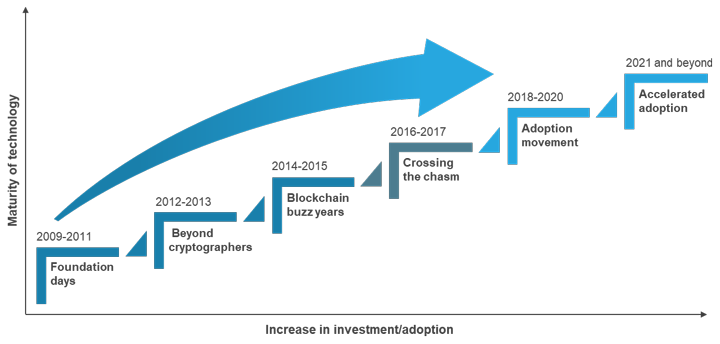How Token Utility Drives Real Value in Crypto Projects?
Investors today are more cautious than ever, learning to look beyond slick marketing to see whether a coin actually serves a functional purpose within its ecosystem.

In the rapidly evolving world of crypto, new trends and buzzwords come and go, but one concept consistently separates hype-driven tokens from projects with lasting impact: token utility. Investors today are more cautious than ever, learning to look beyond slick marketing to see whether a coin actually serves a functional purpose within its ecosystem.
This new level of due diligence applies whether youre picking a blue-chip coin or hunting for a promising crypto presale to buy now before the next bull market ignites. Understanding how token utility works and how to spot genuine value can help you filter out vaporware and focus on digital assets with staying power.
What Is Token Utility, Exactly?
At its core, token utility refers to the real-world use case for a cryptocurrency within its network. Unlike pure speculative coins that exist only to be traded, utility tokens power specific functions. They might enable payments for network services, grant voting rights in decentralized governance, or act as collateral in DeFi protocols.
Without utility, a tokens value depends almost entirely on speculation. With it, the asset gains an organic demand that can sustain and grow over time even through market downturns.
Why Utility Matters More in 2025?
The crypto market has matured significantly since the 2017 ICO boom, when countless projects raised millions with little more than a whitepaper. Regulators have tightened oversight, and retail investors have become more educated. As a result, tokens with no clear use case often fade away quickly.
In 2025 and beyond, investors increasingly favor projects that solve real problems whether thats offering faster cross-border payments, powering decentralized cloud storage, or creating new forms of digital identity. A well-designed utility token aligns incentives for developers, holders, and users, creating a self-sustaining economy within the blockchain network.
Examples of Strong Utility in Action
-
Ethereum (ETH)
Perhaps the best-known utility token, ETH fuels the entire Ethereum network. Users pay gas fees in ETH to run smart contracts and process transactions. This fundamental role keeps demand for ETH alive regardless of short-term market cycles. -
Binance Coin (BNB)
Originally created to give traders discounts on Binances exchange fees, BNBs utility has expanded over the years. Its now used to pay for travel bookings, transaction fees on Binance Chain, and even as collateral on multiple DeFi platforms. -
Chainlink (LINK)
LINK tokens pay node operators who provide secure data feeds for smart contracts. Without this incentive, Chainlinks decentralized oracle network couldnt function reliably.
These examples prove that clear utility often correlates with sustained adoption and thats what investors should look for when evaluating new tokens.
How to Evaluate a Tokens Utility?
When you encounter a new token or presale, dont just read the marketing promises. Dig deeper by asking these questions:
? What problem does the token solve?
Tokens must exist for a reason beyond raising capital.
? Is there ongoing demand for the tokens use?
One-time hype wont keep prices up; repeated use within an ecosystem will.
? Can the project deliver the promised utility?
Check whether the core tech is live, audited, and in useor if its still vaporware.
? Is the supply structure reasonable?
High inflation or endless token minting can dilute value even if demand exists.
This checklist can help you distinguish serious projects from opportunistic cash grabs.
Emerging Trends in Utility Tokens
The concept of token utility is evolving alongside new blockchain technologies and market needs. Here are three trends reshaping the landscape:
1. Real-World Asset (RWA) Tokenization
Projects are increasingly using tokens to represent tangible assets like real estate, commodities, or carbon credits. This bridges blockchain with traditional finance and brings more practical use cases to crypto markets.
2. Cross-Chain Interoperability
Many new protocols design their utility tokens to work across multiple blockchains. This flexibility increases adoption potential, as users arent locked into a single ecosystem.
3. Integration with AI and IoT
Next-gen tokens power decentralized AI marketplaces or secure machine-to-machine payments in the Internet of Things. This emerging frontier expands utility far beyond finance and gaming.
Common Pitfalls to Avoid
Even if a token appears useful on paper, there are red flags to watch for:
? Overcomplicated Utility: Some projects tack on unnecessary features to justify a token that doesnt really need to exist.
? Centralized Control: If a single team or founder controls the majority of tokens, true utility can be undermined by poor governance.
? Low User Adoption: A tokens value is tied to how many people actually use it. Check community size, active wallets, and transaction volumes.
The Future of Utility Tokens
As crypto edges closer to mainstream adoption, regulators are also pushing for clearer distinctions between securities and genuine utility tokens. This pressure encourages builders to design tokens that offer real value, rather than just serving as fundraising tools.
In the next five years, expect to see utility tokens powering everyday digital interactions from paying for decentralized cloud storage to enabling self-sovereign digital identities that replace cumbersome logins.
Final Thoughts
Whether youre a retail investor or a blockchain entrepreneur, understanding token utility is non-negotiable. It can protect you from hype cycles and help you identify projects with the strongest foundations for growth.





































